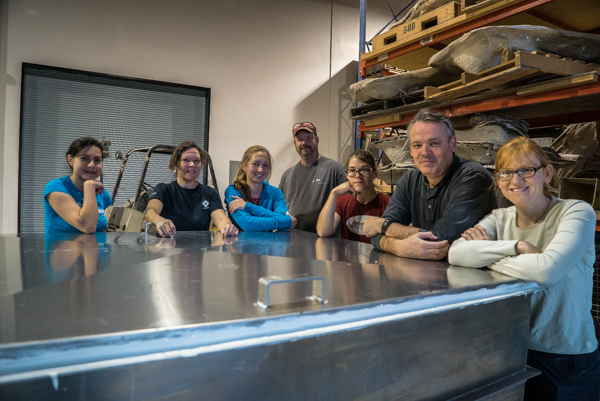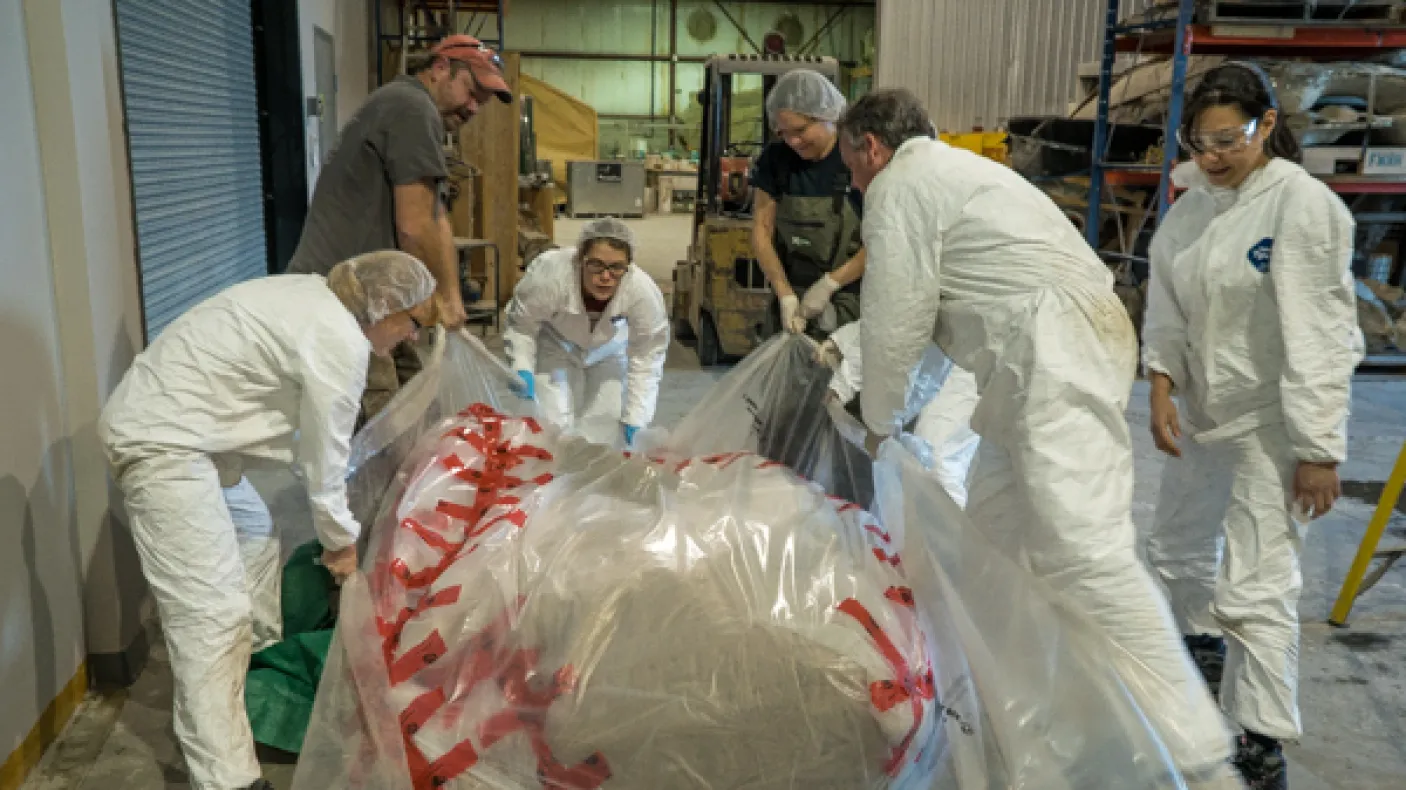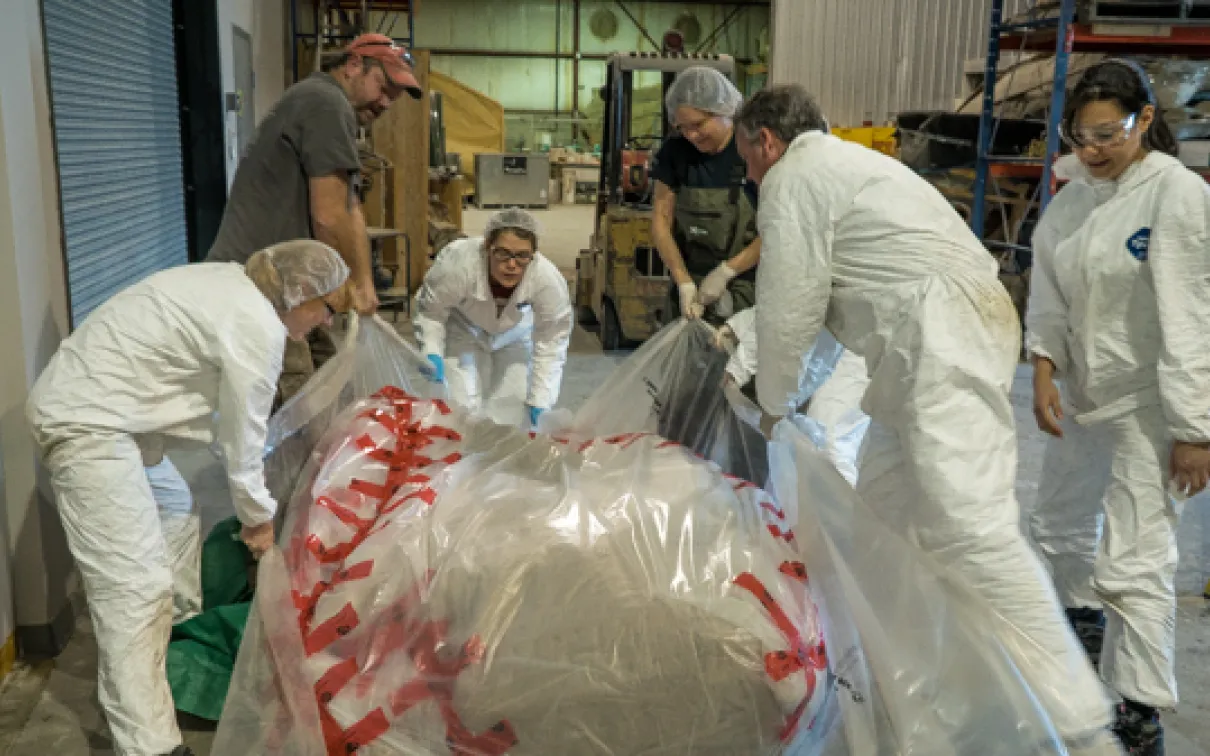Blue Whale Update: From Trenton with Love
Published
Categories
Author
Blog Post
It’s that time of year where many of us are pretty focused on the holidays. Spending time with family and friends, baking and eating loads of treats, and - let’s be honest - the gifts. Finding them, buying them, wrapping them, and getting them to where they need to go, whether the destination is under the Christmas tree, or to be mailed to relatives somewhere else around the world.
So, given that everybody’s in this present-logistics state of mind, we have a gift-wrapping question for you… how do you ship a blue whale heart?
When we last left you with a Blue Whale Update, a small team of scientists were attempting a first: trying to preserve the heart of a blue whale. After a particularly harsh winter, two whale carcasses washed ashore in May 2014 in Newfoundland: the first in Trout River, and the second in Rocky Harbour. Nine blue whales died, all from the Atlantic population which has been Federally-listed as Endangered since 2002. The Royal Ontario Museum, led by Drs. Mark Engstrom and Burton Lim, went to Trout River, and research technician Jacqueline Miller went to Rocky Harbour, to try and make the best of this tragic event - collect the remains of the whale in order to engage the public in the species’ natural history and conservation, while also conducting research on this critically endangered population. With the help of Research Castings International, the skeleton of the whale is slowly being cleaned by microorganisms as they sit in containers of soil on the company’s site in Trenton, Ontario. The heart has spent the last six months in preservative chemicals in a custom-made steel tank. If you’re curious about more details of the previous steps, please visit our Blue Whale project page.
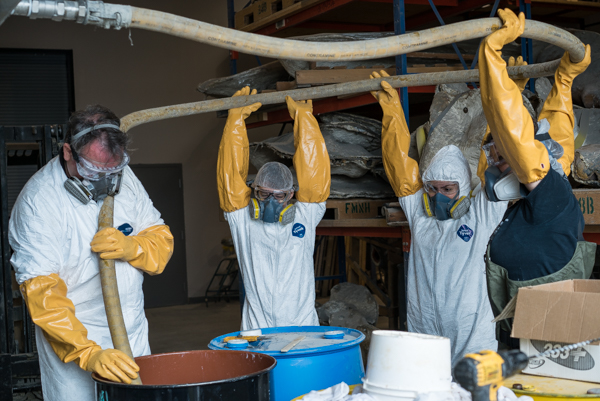
This November, a team from the ROM returned to Trenton to check up on the progress of the heart’s preservation, and see if the attempt to puff it up with formalin had worked. At the same time, with some intense orchestration of logistics, we needed to get the organ out of its chemical bath, rinsed, and wrapped up tightly, so it could be shipped to Germany for the next stage of the preservation process – plastination. This is the same method and same world-renowned anatomical preservation used for the exhibit Body Worlds, where the fluids within the organic tissue are replaced with a polymer-like silicone that will support the remaining organic tissues, and retain enough life-like detail that we will still be able to see what the heart looked like and also preserve it for public display at the museum.
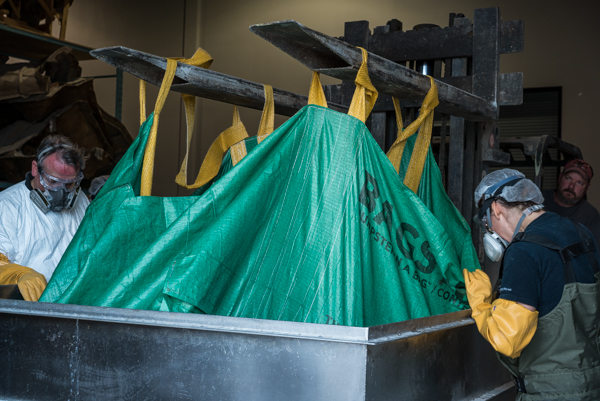
But before the plastination process could be set in motion, the heart needed to get to Germany in one piece - which mean packing it up tightly and ensuring there was enough padding in its steel tank that it wouldn’t shift around too much during its travels. Just like a package you might have shipped to you with something delicate inside, the blue whale heart has bags of styrofoam peanuts to help protect it - there’s just a lot more - roughly twelve garbage bags full of them! With the help of seven strong pairs of arms and a forklift, the heart was wrapped up first within a water-soaked paper material called void-fill that would help keep it moist and flexible and prevent drying. The layers continued with more plastic sheeting and more void-fill, along with a whole lot of packing tape. Just like Christmas presents, you can never really use too much tape to wrap a blue whale heart!
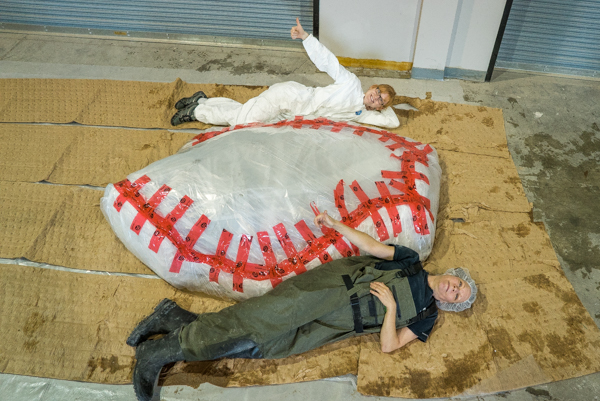
Wrapped up tidy and tight, the heart was deposited by forklift back into its freshly-cleaned and disinfected steel tank, which had been lined with the bags of styrofoam as well as sheets of other foam to insulate and cushion its passenger. The container lid was sealed on with caulking, and finally the heart was ready for its journey to Germany with the help of Kuehne + Nagel, a shipping company, and Lufthansa Air Cargo. The heart was a most special delivery that will be a gift for future ROM visitors for years to come if the plastination process is successful. The next steps for the blue whale project include preparations for putting the skeleton on display in 2017, as well as an analysis of the whale’s DNA.
